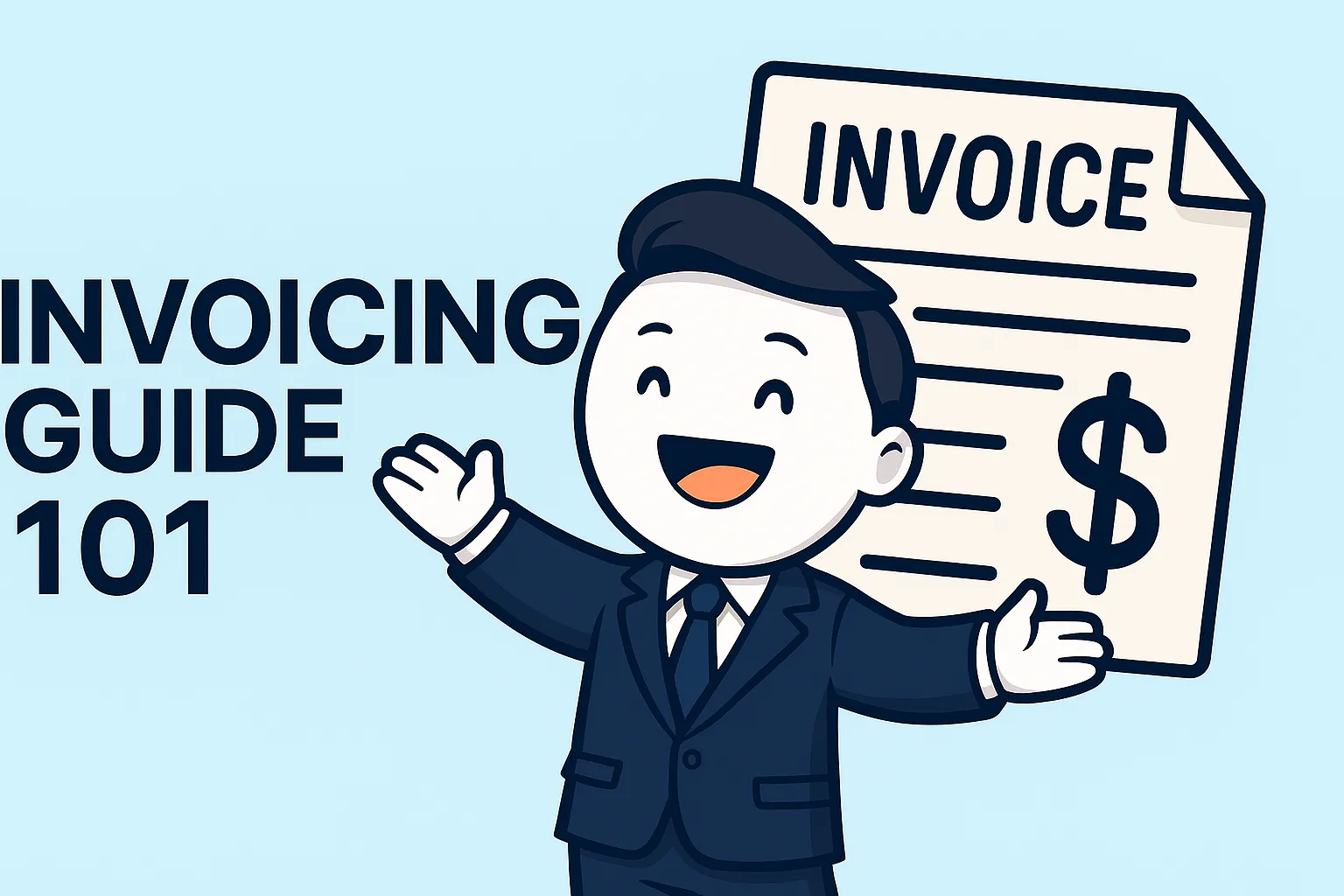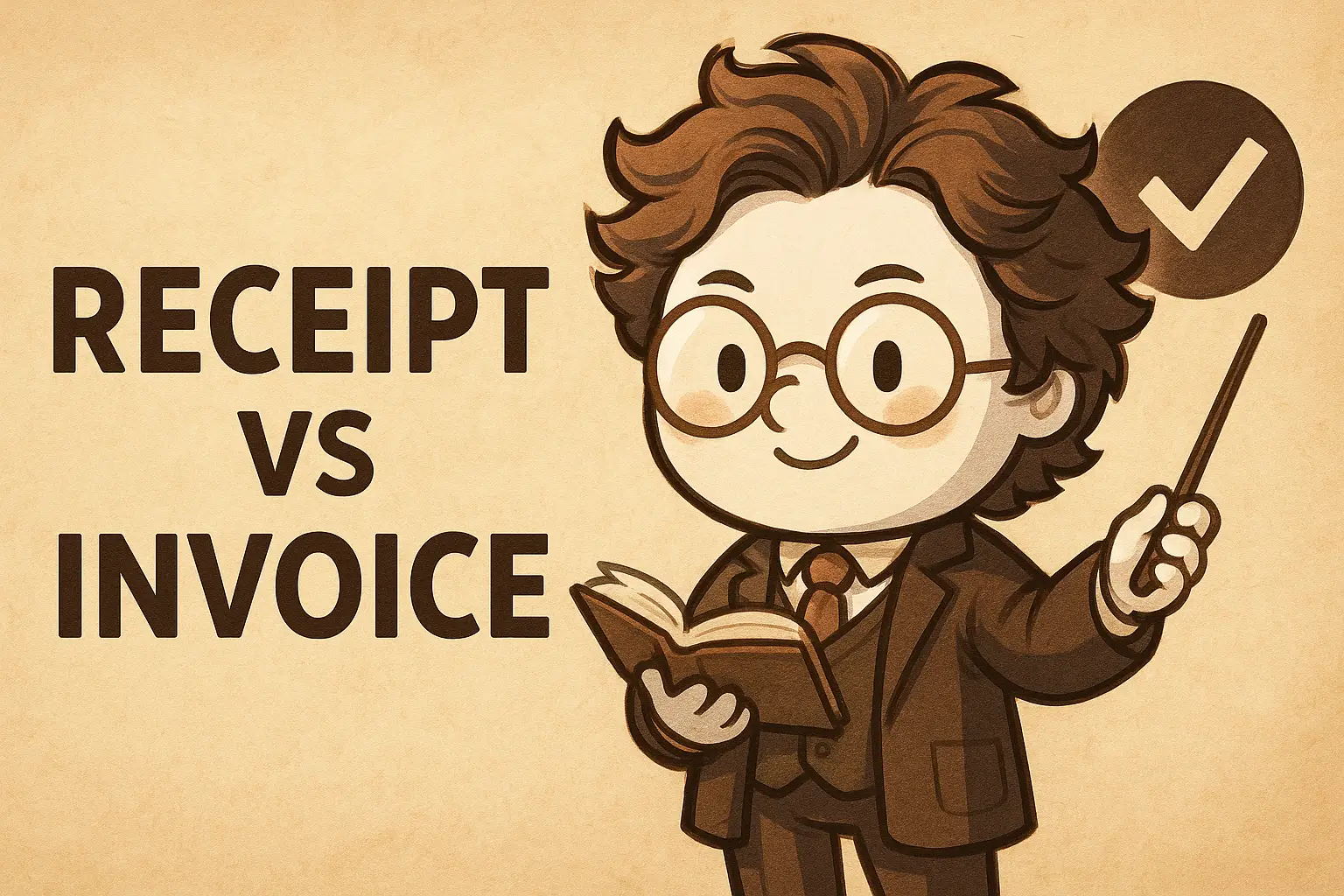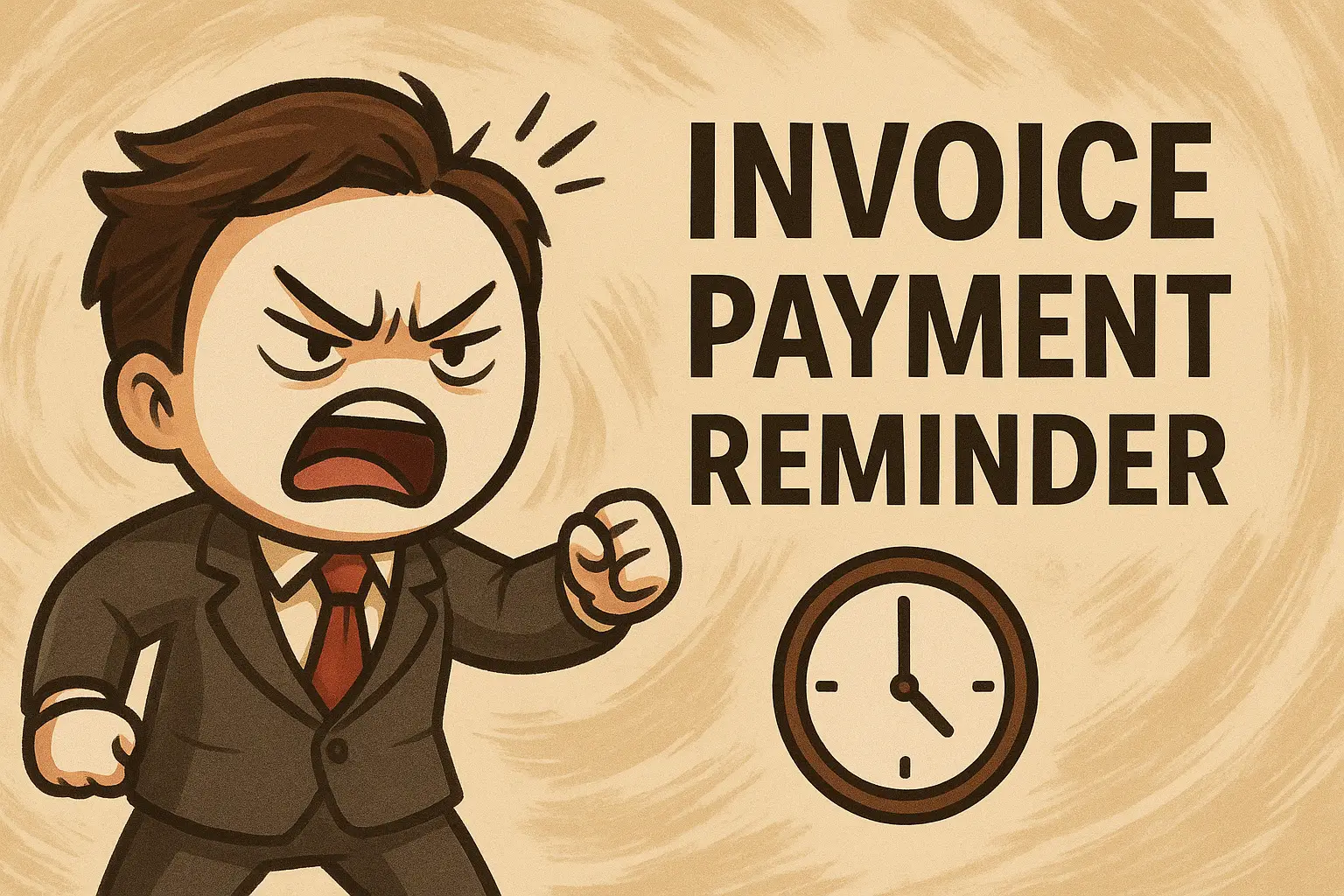Running a successful business means getting paid on time, every time. Whether you're a freelancer just starting out or a small business owner looking to streamline your billing process, mastering the art of invoicing is crucial for maintaining healthy cash flow and professional relationships.
In this comprehensive guide, we'll walk you through everything you need to know about creating professional invoices that get results. From understanding the legal requirements to implementing best practices that accelerate payments, you'll have all the tools needed to transform your invoicing process.
What is an Invoice? Understanding the Basics
An invoice is a formal payment request document sent from a seller to a buyer that itemizes products or services provided and requests payment within specified terms. More than just a bill, an invoice serves as a legal record of the transaction and establishes the contractual obligation for payment.
Think of an invoice as your business's formal way of saying, "Here's what I provided, here's what you owe, and here's when I need to be paid." When done correctly, invoices protect both parties and ensure smooth business transactions.
Essential Invoice Components: What Every Invoice Must Include
Creating a legally compliant and professional invoice requires including specific elements. Missing any of these components could delay payment or create legal complications down the road.
Required Legal Elements
Your invoice must contain these fundamental components to be considered a valid legal document:
Business Information: Include your complete business name, address, phone number, and email address. If you have a business logo, add it to reinforce your brand identity and professionalism.
Client Details: Add the client's full name or company name, billing address, and contact information. Always address the invoice to a specific person rather than just the company name when possible.
Invoice Number: Create a unique invoice number for tracking purposes. Use a consistent numbering system like sequential numbers (001, 002, 003) or date-based formats (2025-001, 2025-002).
Invoice Date: Include the date you're sending the invoice. This date starts the payment term countdown and is crucial for accounting purposes.
Due Date: Clearly specify when payment is expected. This removes any ambiguity about payment timing and helps establish urgency.
Detailed Description: Provide clear, specific descriptions of all products or services provided. Include quantities, rates, and any applicable taxes or fees.
Payment Terms: Outline your payment conditions, accepted payment methods, and any late payment penalties or early payment discounts.
Total Amount Due: Display the total amount prominently, making it impossible to miss or misinterpret.
Professional Enhancements
While not legally required, these elements elevate your invoice's professionalism:
- Purchase order numbers (if applicable)
- Project references or job numbers
- Itemized tax breakdowns
- Subtotals for different service categories
- Your business tax identification number
- Professional formatting with consistent fonts and spacing
Types of Invoices: Choosing the Right Format
Different business situations require different invoice types. Understanding when to use each type ensures you're always sending the most appropriate document.
Standard Invoice
The most common type, sent after completing work or delivering products. Standard invoices include all completed items and request full payment according to your terms.
Recurring Invoice
Perfect for ongoing services like monthly retainers, subscriptions, or regular maintenance contracts. These invoices automatically generate at specified intervals, ensuring consistent billing without manual effort.
Milestone Invoice
Ideal for large projects, milestone invoices break payments into smaller chunks tied to project phases. This improves cash flow and reduces risk for both parties.
Proforma Invoice
Sent before work begins, proforma invoices outline expected costs and serve as quotes. They're not payment requests but help clients understand project scope and budget.
Credit Invoice
Used when you need to reduce the amount owed, typically for returns, discounts, or billing corrections. Credit invoices maintain accurate records while adjusting client balances.
Invoice Best Practices: Getting Paid Faster
Implementing proven invoicing best practices can dramatically improve your payment times and reduce administrative headaches.
Timing is Everything
Send invoices immediately after completing work or delivering products. Prompt invoicing demonstrates professionalism and keeps your services fresh in the client's mind. For ongoing projects, establish regular billing cycles and stick to them religiously.
Crystal Clear Communication
Use simple, jargon-free language that anyone can understand. Describe your services or products specifically enough that someone unfamiliar with your work could understand what was provided. Avoid abbreviations or industry-specific terms that might confuse clients.
Professional Presentation
Your invoice reflects your business's professionalism. Use consistent formatting, readable fonts, and logical layouts. Ensure adequate white space and organize information hierarchically, with the most important details (like total amount due) prominently displayed.
Streamline Payment Options
Make paying as easy as possible by offering multiple payment methods. Include online payment links, bank transfer details, and any other convenient options. The easier you make it to pay, the faster you'll receive payment.
Follow Up Systematically
Create a systematic follow-up process for overdue invoices. Send polite reminders at regular intervals, starting with a friendly note and gradually becoming more formal if necessary. Many business owners avoid following up, but it's essential for maintaining cash flow.
Common Invoicing Mistakes to Avoid
Even small invoicing errors can cause significant payment delays and damage professional relationships.
Incomplete Information
Missing contact details, vague service descriptions, or unclear payment terms create confusion and provide excuses for delayed payment. Always double-check that every required element is included and accurate.
Inconsistent Numbering
Using random or duplicate invoice numbers makes tracking payments difficult and can cause accounting nightmares. Establish a numbering system from day one and stick to it consistently.
Unclear Payment Terms
Vague language like "payment due soon" or "pay when convenient" invites delayed payment. Always specify exact due dates and accepted payment methods.
Poor Organization
Cluttered, disorganized invoices look unprofessional and can be difficult to process. Use clean layouts with logical information flow and plenty of white space.
Delayed Sending
Waiting weeks to send invoices after completing work reduces your leverage and makes payment feel less urgent to clients. Invoice immediately or set up automated systems to ensure timely billing.
Legal Requirements and Compliance
Understanding legal invoicing requirements protects your business and ensures your invoices will hold up if disputes arise.
Tax Obligations
Depending on your location and business type, you may need to collect and remit sales tax, VAT, or other taxes. Research your local requirements and ensure your invoices properly calculate and display applicable taxes.
Record Keeping
Maintain copies of all invoices for tax purposes and potential audits. Most jurisdictions require keeping business records for several years, so establish a reliable filing system from the beginning.
International Considerations
If you work with international clients, research their local invoicing requirements. Some countries have specific format requirements or tax implications that could affect your invoicing process.
Technology Solutions: Streamlining Your Process
Modern invoicing doesn't require manual document creation or tracking spreadsheets. Technology solutions can automate much of the invoicing process while ensuring consistency and professionalism.
Free Invoice Generators
Free invoice generators provide professional templates without monthly fees. They're perfect for small businesses and freelancers who need quality invoices without complex features or ongoing costs.
Automated Features
Look for solutions that offer automated invoicing, payment reminders, and recurring billing capabilities. These features save time and reduce the chance of human error while ensuring consistent follow-up.
Integration Capabilities
Choose invoicing solutions that integrate with your existing business tools like accounting software, project management systems, or customer relationship management platforms.
Managing Cash Flow Through Strategic Invoicing
Effective invoicing directly impacts your business's cash flow and financial stability.
Payment Terms Strategy
Consider offering early payment discounts to encourage faster payment while charging late fees for overdue accounts. This creates financial incentives for timely payment.
Invoice Timing
For recurring clients, align invoice timing with their payment cycles. Many businesses pay bills on specific dates each month, so timing your invoices accordingly can accelerate payment.
Project Structuring
For large projects, structure payment schedules to maintain positive cash flow. Consider requesting deposits, milestone payments, or shorter payment terms for new clients.
Building Client Relationships Through Professional Invoicing
Your invoicing process is often one of the most frequent touchpoints with clients. Use it as an opportunity to reinforce positive relationships.
Personal Touch
Include brief, personalized messages thanking clients for their business or highlighting project successes. This transforms a transactional document into a relationship-building tool.
Consistent Branding
Ensure your invoices reflect your brand identity through consistent colors, fonts, and messaging. Professional, branded invoices reinforce your business's credibility and memorability.
Transparent Communication
If project scope changes or additional charges apply, communicate these clearly before including them on invoices. Surprise charges damage relationships and create payment disputes.
Future-Proofing Your Invoicing Process
As your business grows, your invoicing needs will evolve. Plan for scalability from the beginning.
Scalable Systems
Choose invoicing solutions that can grow with your business. Consider how your needs might change as you add clients, team members, or service offerings.
Data Security
Protect client information by using secure invoicing platforms and following data protection best practices. This becomes increasingly important as privacy regulations evolve.
Automation Opportunities
Identify repetitive invoicing tasks that could be automated. This might include recurring billing, payment reminders, or integration with time-tracking systems.
TL;DR
Professional invoicing is both an art and a science that directly impacts your business's success. By understanding legal requirements, implementing best practices, and leveraging appropriate technology solutions, you can create an invoicing process that accelerates payments, strengthens client relationships, and supports business growth.
Remember that invoicing is an ongoing process that benefits from regular review and refinement. As your business evolves, so should your invoicing approach. Start with the fundamentals covered in this guide, then gradually implement advanced strategies as your needs become more sophisticated.
The investment you make in creating a professional invoicing process will pay dividends through faster payments, reduced administrative burden, and stronger client relationships. Whether you're using a free invoice generator or comprehensive billing software, the principles remain the same: be clear, be professional, and be consistent.
Take action today by reviewing your current invoicing process against the best practices outlined in this guide. Identify areas for improvement and implement changes systematically. Your future self will thank you when payments start arriving faster and your business operations run more smoothly.


